Silvercrest 74612 Owner's manual
- Category
- Sewing machines
- Type
- Owner's manual
This manual is also suitable for

Bedienungs- und Sicherheitshinweise
NÄHMASCHINE
MACHINE A COUDRE SNMD 33 A1
IAN 74612
MACHINE A COUDRE
Instructions d'utilisation et consignes de sécurité
NAAIMACHINE
Bedienings- en veiligheidsinstructies
SEWING MACHINE
Operation and Safety Notes

Avant de lire le mode d'emploi, ouvrez la page contenant les illustrations et familiarisez-
vous ensuite avec toutes les fonctions de l'appareil.
Klappen Sie vor dem Lesen die Seite mit den Abbildungen aus und machen Sie sich
anschließend mit allen Funktionen des Gerätes vertraut.
FR / BE Instructions d'utilisation et consignes de sécurité Page 5
NL / BE Bedienings- en veiligheidsinstructies Pagina 27
DE / AT / CH Bedienungs- und Sicherheitshinweise Seite 49
GB / IE Operation and Safety Notes Page 71
Vouw vóór het lezen de pagina met de afbeeldingen open en maak u vertrouwd met alle
functies van het apparaat.
Before reading, unfold the page containing the illustrations and familiarise yourself with all
functions of the device.
Page is loading ...
Page is loading ...
Page is loading ...
Page is loading ...
Page is loading ...
Page is loading ...
Page is loading ...
Page is loading ...
Page is loading ...
Page is loading ...
Page is loading ...
Page is loading ...
Page is loading ...
Page is loading ...
Page is loading ...
Page is loading ...
Page is loading ...
Page is loading ...
Page is loading ...
Page is loading ...
Page is loading ...
Page is loading ...
Page is loading ...
Page is loading ...
Page is loading ...
Page is loading ...
Page is loading ...
Page is loading ...
Page is loading ...
Page is loading ...
Page is loading ...
Page is loading ...
Page is loading ...
Page is loading ...
Page is loading ...
Page is loading ...
Page is loading ...
Page is loading ...
Page is loading ...
Page is loading ...
Page is loading ...
Page is loading ...
Page is loading ...
Page is loading ...
Page is loading ...
Page is loading ...
Page is loading ...
Page is loading ...
Page is loading ...
Page is loading ...
Page is loading ...
Page is loading ...
Page is loading ...
Page is loading ...
Page is loading ...
Page is loading ...
Page is loading ...
Page is loading ...
Page is loading ...
Page is loading ...
Page is loading ...
Page is loading ...
Page is loading ...
Page is loading ...
Page is loading ...
Page is loading ...
Page is loading ...
Page is loading ...

Introduction
Important safety instructions
Getting ready
Sewing basics
Disposal
Guarantee
Service
Manufacturer
Introduction............................................................................................................................Page 72
Intended use..........................................................................................................................Page 72
Details of the machine...........................................................................................................Page 72
Accessories ...........................................................................................................................Page 72
Technical data .......................................................................................................................Page 73
..............................................................................Page 74
Connecting machine to power source ...................................................................................Page 75
Fitting the snap-in sewing table.............................................................................................Page 75
Inserting the needle...............................................................................................................Page 76
Two-step presser foot lever ...................................................................................................Page 76
Attaching the presser foot holder ..........................................................................................Page 77
Setting spool pins ..................................................................................................................Page 77
Winding the bobbin................................................................................................................Page 78
Inserting the bobbin...............................................................................................................Page 78
Threading the upper thread...................................................................................................Page 79
Thread tension ......................................................................................................................Page 80
Bringing up the lower thread .................................................................................................Page 80
Sewing / Useful applications .................................................................................................Page 81
Page 81
Page 82
Straight stitching and needle position....................................................................................Page 82
Page 83
Zippers and piping.................................................................................................................Page 83
Blind hem foot .......................................................................................................................Page 84
Sewing on buttons.................................................................................................................Page 84
How to sew buttonholes ........................................................................................................Page 85
Page 86
Page 86
Page 87
Page 87
Page 88
Applique ................................................................................................................................Page 88
Scallop stitching ....................................................................................................................Page 89
Page 89
Page 90
Page 91
..............................................................................................................................Page 92
..........................................................................................................................Page 92
Service number .....................................................................................................................Page 92
...................................................................................................................Page 92
Matching needle/ fabric/ thread .............................................................................................
How to choose your pattern ..................................................................................................
Zigzag stitching .....................................................................................................................
Overlock stitches ...................................................................................................................
3-step zig-zag........................................................................................................................
.........................................................................................................................
Patch work.............................................................................................................................
Monogramming and embroidering with embroidery hoop*....................................................
Twin needle ...........................................................................................................................
Maintenance..........................................................................................................................
Trouble shooting guide..........................................................................................................
Maintenance
Stretch-stitch
Table of contents
GB/ IE 71

a. All purpose foot
Button sewing foot
Blind hem foot
Bobbin (3x)
i. Oil bottle
k. L-screwdriver
m. Threads (1x blue, 1x pink, 1x yellow)
o. Darning plate
b. Zipper foot
d. Buttonhole foot
f. Needle threader
h. Spool pin felt (2x)
Screwdriver (L&S)
Seam ripper/ brush
Edge/ quilting guide
c.
e.
g.
j. Needle box (3x single needle, 1x twin needle)
l.
n.
p.
1.
3.
5.
7.
9.
11.
Thread take-up lever
Thread tension dial
Stitch length dial
Patten selector dial
Sewing table
Presser foot
13. Bobbin winder stopper
15. Spool pin
17. Handle
19. Main plug socket
21. Hand wheel
2. Bobbin thread guide
4. Stitch width dial
6. Stitch display
8. Reverse sewing lever
10. Needle plate
12. Thread cutting
14. Bobbin winder spindle
16. Upper thread guide
18. Presser foot lifter
20. Power switch
b
f
h
p
n
l
j
d
a
c
e
g
i
k
m
o
1
3
5
7
9
11
13
15
17
19
21
2
20
18
16
10
14
12
4
6
8
Congratulations on the purchase of your sewing machine. You have bought a top quality product
which has been manufactured with great care.
These Operating Instructions contain all you need to know about using your sewing machine.
We hope you enjoy your sewing machine and wish you success.
the sewing machineBefore you use for the first time, it is essential that you make yourself fully familiar
with the functions of the appliance and find out how to correctly use sewing machine. Read the
following directions for use as well as the safety instructions. Keep these instructions. When handing
the device on to a third party, hand these instructions on, too.
Introduction
Intended use
The sewing machine is ...
- for use as a movable machine,
- for sewing of typical household textiles and ...
- only for private household use.
The sewing machine is ...
- to be installed at a fixed location,
- for processing of other materials (e.g. leather or other heavy materials such as tent or sail fabrics)
- for commercial or industrial use.
intended
not intended
Introduction
72
GB/ IE
Details of the machine
Accessories

Technical data
Rated voltage
Power rating
Dimensions
Cable length
Weight
Material
Operating elements
Display elements
Looper system
Needle system
Interference-free
TÜV approved
Product guarantees
Class
- Machine
- Sewing light
- Total
230 V/ 50 Hz
70 Watt
100 mW
70 Watt
Approx. (WxHxD)
Approx. 1,8 m
Approx. 1,4 m
Approx. 6.0 kg
Aluminium / plastic
Available
Available
Available
Available
130/705H
In acc. with EU Directive
Yes
3 years
- When handle is folded down
- Power cable
- Foot control cable
- Machine
- Mains power switch ON/OFF
- Foot control for sewing speed
- Stitch display
- Sewing light
397x277x194.5mm
Oscillating Hook
II
GB/ IE 73
Introduction

Important safety instructions
When using an electrical appliance, basic safety should always be followed, including the following:
Read all instructions before using this sewing machine.
1. An appliance should never be left unattended when plugged in.
2. Always unplug this appliance from the electric outlet immediately after using, as well as before
cleaning and other maintenance.
1. Do not allow to be used as a toy. Close attention is necessary when this appliance is used by or
near children.
2. Use this appliance only for its intended use as described in this manual. Use only attachments
recommended by the manufacturer as contained in this manual.
3. Never operate this appliance if it has a damaged cord or plug, if it is not working properly, if it has
been dropped or damaged, or dropped into water. Return the appliance to the nearest authorized
dealer or service center for examination, repair, electrical or mechanical adjustment.
4. Never operate the appliance with any air openings blocked. Keep ventilation openings of the
sewing machine and foot controller free from accumulation of lint, dust, and loose cloth.
5. Keep fingers away from all moving parts. Special care is required around the sewing machine needle.
6. Always use the proper needle plate. The wrong plate can cause the needle to break.
7. Do not use bent needles.
8. Do not pull or push fabric while stitching. It may deflect the needle causing it to break.
9. Switch the sewing machine off ("O") when making any adjustments in the needle area, such as
threading needle, changing needle, threading bobbin, or changing presser foot, and the like.
10. Always unplug sewing machine from the electrical outlet when removing covers, lubricating, or
when making any other user servicing adjustments mentioned in the instruction manual.
11. Never drop or insert any object into any opening.
12. Do not use outdoors.
13. Do not operate where aerosol spray products are being used or where oxygen is being administered.
14. To disconnect, turn all controls to the off ("O") position, then remove plug from outlet.
15. Do not unplug by pulling on cord. To unplug, grasp the plug, not the cord.
This sewing machine is intended for household use only.
DANGER
SAVE THESE INSTRUCTIONS
- To reduce the risk of electric shock:
3. The sewing machine is equipped with a LED lamp. If the LED lamp is broken, it must be replaced
by the manufacturer or its service agent in order to avoid a hazard.
16. The sound pressure level under normal operating conditions is 75dB(A).
17. Please turn off the machine or unplug when the machine is not operating properly.
18. Never place anything on the foot controller.
19. If the supply cord that is fixed with foot controller is damaged, it must be replaced by the
manufacturer or its service agent or a similar qualified person in order to avoid a hazard.
20. This appliance is not intended for use by persons (including children) with reduced physical,
sensory or mental capabilities, or lack of experience and knowledge, unless they have been given
supervision or instruction concerning use of the appliance by a person responsible for their safety.
21. Children should be supervised to ensure that they do not play with the appliance.
22. Keep the instruction at a suitable place that close to the machine, and hand it over if you give the
machine to a third party.
WARNING - To reduce the risk of burns, fire, electric shock, or injury to persons:
74
GB/ IE
Important safety instructions

GB/ IE 75
Connecting machine to power source
Attention:
Attention:
Sewing light
Foot control
Unplug power cord when machine is not
in use.
Consult a qualified electrician if in doubt
as to connect machine to power source.
Unplug power cord when machine is not
in use.
The foot control must be used with the
appliance by FC-2902B (220-240V area)
manufactured by
Connect the machine to a power source as
illustrated.
Press main switch (A) for power and light
on. (" l ")
Foot control regulates the sewing speed.
FDM (zhejiang founder
motor corporation ltd, China).
Installing the snap-in sewing table
Keep the snap-in sewing table horizontal,
and push it in the direction of the arrow.
The inside of the snap-in sewing table can
be utilized as an accessory box.
Getting ready
A
A

A
76
GB/ IE
Attention:
Turn power switch to off ("O").
Needles must be in perfect condition.
Change the needle regularly, especially if it
is showing signs of wear and causing
problems.
Insert the needle following the illustrated
instructions.
A. Loosen the needle clamp screw and
tighten again after inserting the new
needle.
B. The flat side of the shaft should be
towards the back.
C/D. Insert the needle as far up as it will go.
Only use fully-functional needles:
Problems can occur with:
- Bent needles
- Blunt needles
- Damage points
A
B
C
D
Two-step presser foot lifter
When sewing several layers or thick fabrics,
the presser foot can be raised a second
stage for easy positioning of the work. (A)
Inserting the needle
Getting ready

GB/ IE 77
Attaching the presser foot holder
Attention:
2. Attaching the presser foot
3. Removing the presser foot
4. Attaching the edge/ quilting guide
Turn power switch to off ("O") when
carrying out any of the above operations!
1. Raise the presser bar (a) with the
presser foot lifter. Attach the presser foot
holder (b) as illustrated.
Lower the presser foot holder (b) using
the presser foot lifter, until the cut-out (c)
is directly above the pin (d)
The presser foot (f) will engage
automatically.
Raise the presser foot using the presser
foot lifter.
Raise the lever (e) and the foot
disengages.
Attach the edge/ quilting guide (g) in the
slot as illustrated.
Adjust as needed for hems, pleats,
quilting, etc.
c
d
e
f
e
g
b
a
12
3
4
Setting spool pins
The spool pins are used for holding the
spools of thread when feeding the thread to
the machine.
To use, pull up the spool pins. Push down
for storage.
A. Upper thread
B. Hole
C. Tangle
D. Spool pin
When using thread which has tendency
to tangle around a spool pin (D), thread
through the hole (B) of spool pin as
shown. The hole should face the thread
spool.
Note:
Getting ready
A
B
C
A
D

78
GB/ IE
Inserting the bobbin
Attention:
Turn power switch to off ("O").
When inserting or removing the bobbin, the
needle must be fully raised.
1. Open the hinged cover.
2. Hold the bobbin case with one hand.
3. Insert the bobbin (2) so that the thread
runs in a clockwise direction (arrow). (3)
4. Put the thread under the tension spring.
5. Hold the bobbin case by the hinged latch.
6. Insert it into the shuttle.
1
2
3
4
5
6
a
Getting ready
Winding the bobbin
a. Spool pin felt
Place an empty bobbin on spindle.
Take the thread from the spool through the
guide to the bobbin.
Wind the thread a few times by hand around
the empty bobbin in a clockwise direction.
Push the bobbin to the right towards the
bobbin winding position.
Press the foot control gently. The bobbin
will stop winding when it is full. Push the
bobbin to the left to "sewing position" and
remove it.
When the bobbin winder spindle is in
"bobbin winding" position, the machine
will not sew. To start sewing, push the
bobbin winder spindle to the left (sewing
position).
Note:

Needle threader
You can use the needle threader as a
knitting aid.
1. Insert the needle threader through the
eye of the needle from back to front.
2. Guide the upper thread through the wire
loop of the needle threader.
3. Pull the needle threader together with
the thread back through the eye of the
needle.
12
3
GB/ IE 79
Threading the upper thread
Attention:
Turn power switch to off . Raise the
needle bar.
Follow completely the numbered sequence
in upper threading. Should you skip or fail
to properly engage the thread with any of
the thread guides, you will not sew properly.
(1-5)
Continue to draw the thread down and into
the needle bar thread guide. Pass the
thread through the eye of the needle from
front to back.
("O")
a. Spool pin felt
Getting ready
a
1
2
3
4
5

80
GB/ IE
Thread tension
Note:
Lower thread tension
Upper thread tension
The bobbin thread tension does not
normally have to be adjusted.
To test the bobbin thread tension, remove
the bobbin case and bobbin and hold it by
suspending it by the thread. Jerk it once or
twice. If the tension is correct, the thread will
unwind by about an inch or two. If the
tension is too tight, it does not unwind at all.
If the tension is too loose, it will drop too
much. To adjust, turn the small screw on the
side of the bobbin case.
Basic thread tension setting: "AUTO"
To increase the tension, turn the dial to the
next number up. To reduce the tension, turn
the dial to the next number down.
A. Normal thread tension
B. Upper thread tension too loose
C. Upper thread tension too tight
Bringing up the lower thread
Hold the upper thread with the left hand.
Turn the handwheel forwards until the
needle is raised.
Pull on the upper thread to bring the lower
thread up through the stitch plate hole. Lay
both threads to the back under the presser
foot.
A
B
C
Getting ready

Sewing / Useful applications
Stitching
Cutting the thread
At the end of seam, press down the reverse
sewing lever. Sew a few reverse stitches.
Release the lever and the machine will sew
forwards again. (A)
Removing the work
Turn the handwheel towards to bring the
thread take up lever to its highest position,
raise the presser foot and remove work
towards the back.
Hold the threads behind the presser foot
with both hands, guide them to the slit (B)
and press down.
GB/ IE 81
NEEDLE SIZE
9-11(65-75)
12(80)
14(90)
16(100)
18(110)
Lightweight fabrics-thin cottons, voile, serge, silk ,
muslin, Qiana, interlocks, cotton knits, tricot,
jerseys, crepes, woven polyester, shirt & blouse
fabrics.
Medium weight fabrics-cotton, satin, kettleclote,
sailcloth, double knits, lightweight woollens.
Medium weight fabrics-cotton duck, woolen,
heavier knits, terrycloth, denims.
Heavyweight fabrics-canvas, woolens, outdoor
tent and quilted fabrics, denims, upholstery
material (light to medium).
Heavy woollens, overcoat fabrics, upholstery
fabrics, some leathers and vinyls.
Light-duty thread in cotton,
nylon or polyester.
Most threads sold are medium
size and suitable for these
fabrics and needle sizes. Use
polyester threads on synthetic
materials and cotton on natural
woven fabrics for best results.
Always use the same thread on
top and bottom.
Heavy duty thread, carpet
thread. (Use heavy foot
pressure-large numbers.)
FABRICS THREAD
A
Matching needle/ fabric/ thread
Note twin needle:
1. Twin needles, can be purchased for utility and decorative work.
2. When sewing with twin needles, the stitch width dial should be set at less than "3" and set the needle
position dial to middle position.
3. European needles show sizes 65, 70, 80 etc. American and Japanese needles show size 9, 11, 12 etc.
4. Replace needle often (approximately every other garment) and / or at first thread breakage or skipped
stitches.
NEEDLE, FABRIC, THREAD SELECTION GUIDE
IMPORTANT: Match needle size to thread size and weight of .fabric
B
Sewing basics

Stitch length dial S1-S2
A
82
GB/ IE
How to choose your pattern
Stitch width dial
Pattern
selector dial
Reverse
sewing lever
Stitch display
For , select pattern " " with
pattern selector dial. Adjust the stitch length
with the stitch length dial. You may choose
any needle position, by turning the stitch
width dial.
For , select pattern " " with
pattern selector dial. Adjust the stitch length
and stitch width according to the fabric
being used.
To obtain any of the other
on the stitch selection
panel, select the letter above the stitch with
the stitch selector dial. Adjust the stitch
length and the stitch width with the control
dials according to the result desired.
To obtain any of the
, turn the stitch length dial to
"S1", to obtain any of the
, turn the stitch length dial to "S2",
select the pattern desired with the pattern
selector dial and adjust the stitch width with
the stitch width dial.
straight stitch
zigzag stitch
patterns shown
in the upper row
patterns on the
second row
patterns on the
third row
Straight stitching and needle position
Stitch length dial
0
1
2
3
4
S
1
S
2
4
3
21
0.5
Stitch width dial
5
0
1
2
3
4
5 2.5 0
S1
Turn the pattern selector dial so that the
stitch display shows the "A" (straight stitch).
Generally speaking, the thicker the fabric,
thread and needle, the longer the stitch
should be.
Choose your needle position, from left
position to right needle position by changing
the stitch width dial from "0" to "5".
Sewing basics

GB/ IE 83
Zig zag stitching
Turn the pattern selector dial to "B".
The maximum zigzag stitch width for zigzag
stitching is "5"; however, the width can be
reduced on any pattern. The width increases
as you move zigzag dial from "0" - "5".
The density of zigzag stitches increase as the
setting of stitch length dial approaches "0".
Neat zigzag stitches are usually achieved at
"2.5" or below.
When the stitch length is set between "0" -
"1", the stitches are very close together
producing the "satin stitch" which is used
for making buttonholes and decorative
stitches.
When sewing on very fine fabric, place a
piece of thin paper under the fabric. It is easy
to tear the paper and remove the paper after
you have finish your seam.
Function of stitch width dial
Function of stitch length dial while
zigzaging
Satin stitch
Fine fabric
Stitch width dial
5
0
1
2
3
4
54 3 210
Stitch length dial
Zipper foot
Stitch Stitch width Stitch length
A2.51~4
The zip foot can be inserted right or left,
depending on which side of the foot you are
going to sew. (1)
To sew past the zip pull, lower the needle
into the fabric, raise the presser foot and
push the zip pull behind the presser foot.
Lower the foot and continue to sew.
It is also possible to sew in a length of cord,
into a bias strip to form a "welt".
According to thickness of fabric to set stitch
length control. (2)
12
Sewing basics

84
GB/ IE
Blind hem foot
For hems, curtains, trousers, skirts, etc.
Blind hem/ lingerie for firm fabrics.
Fold the fabric as illustrated with the wrong
side uppermost. (1)
Place the fabric under the foot. T urn the
handwheel forwards by hand until the needle
swings fully to the left. It should just pierce
the fold of the fabric. If it does not, adjust the
stitch width accordingly. (2)
Adjust the guide (3) by turning the knob (4)
so that the guide just rests against the fold.
Sew slowly, by pressing the foot control
lightly guiding the fabric along the edge of
the guide.
Stitch Stitch width Stitch length
D1~23~5
Button sewing foot
Install the darning plate. This will cover the
feed dog and the stitch length will be
disabled
Position the work under the foot. Place the
button on the marked position, lower the
foot, adjust stitch width to "0" and sew a few
securing stitches. Adjust the stitch width
. Turn the
handwheel to check that the needle goes
cleanly into the left or right hole of the
button, and sew on the button. Adjust the
stitch width to "0" and sew a few securing
stitches.
If a shank is required, place a darning
needle on top of the button and sew. For
buttons with 4 holes, sew through the front
two holes first, push work forward and then
sew through the back two holes as
described.
according to the button
.
Stitch Stitch width Stitch length
B0~50
Sewing basics
14
3
2

GB/ IE 85
Buttonhole foot
Preparation:
Note:
To prepare the fabric:
Tips:
Remove the zigzag foot and attach the buttonhole
foot. Adjust the stitch length dial between "0.5" - "1".
The density of the stitch depends on thickness of
the fabric.
Always test sew a buttonhole.
Measure the diameter of the button and add 0.3cm
(1/8") for the bartacks. If you have a very thick
button, add more to the diameter measurement.
Mark the position and length of the buttonhole on
the fabric.
Position the fabric so that the needle is on the mark
that is furthest from you.
Pull the buttonhole foot towards you as far as it will
go.
Lower the foot.
a. Turn the pattern selector dial to " ". Sew at
moderate speed until you reach the end mark.
b. Turn the pattern selector dial to " " and sew 5-6
bartack stitches.
c. Turn the pattern selector dial to " " and sew the
left side of the buttonhole to the mark at the end
which is further from you.
d. Turn the pattern selector dial to " " and sew bar
tack stitches.
Remove the fabric from under the foot. Draw the
upper thread through the backside of the fabric and
knot upper and lower threads. Cut the center of the
buttonhole with the seam ripper, being careful not to
cut the stitches on either side.
- Slightly reduce upper thread tension to produce
better results.
- Use backing material for fine and stretchy fabrics.
- It is advisable to use a gimp cord for stretch or
knit fabrics. The zigzag should sew over the gimp.
(e)
Stitch Stitch width Stitch length
50.5~1
Sewing basics
ab cd
e

86
GB/ IE
Overlock stitches
Stitch Stitch width Stitch length
E, F 3~5 S1, S2
Note:
Use new needles or ball point needles or
stretch needle!
Seams, neatening, visible hems.
For fine knits, jerseys, neck edges, ribbing.
(A)
For fine knits, jerseys, neck edges, ribbing.
(B)
For fine knits, handknits, seams. (C)
All overlock stitches are suitable for sewing
and neatening edges and
visible seams in one operation.
When neatening, the needle should just go
over the edge of the fabric.
Stretch overlock
Standard overlock
Double overlock stitch
AB C
Sewing on lace and elastic, darning,
mending, reinforcing edges.
Place patch in position. The stitch length
can be shortened to produce very close
stitches. (1)
When mending tears, it is advisable to use a
piece of backing fabric to reinforce. The stitch
density can be varied by adjusting the stitch
length. First sew over the centre and then
overlap on both sides. Depending on the type
of fabric and damage, sew between 3 and 5
rows. (2)
Stitch Stitch width Stitch length
C3~51~2
12
3-step zig-zag
Sewing basics

GB/ IE 87
Stitch Stitch width Stitch length
A2.5S1,S2
To join two pieces of fabric while leaving a
space between their edges.
- Fold over the edges of the two pieces of
fabric for the hem and baste the edges to
a thin piece of paper leaving a small
space between them.
- Stitch along the edge, pulling both threads
slightly when beginning to sew.
- Use thicker than normal threads for
sewing.
- After sewing, remove the basting and the
paper. Finish by tying knots on the
reverse side at the beginning and the end
of the seams.
Patch work
Stitch Stitch width Stitch length
F 3~5 S1
Triple straight stitch: (1)
For hardwearing seams.
The machine sews two stitches forwards
and one stitch backwards. This gives triple
reinforcement.
Stitch Stitch width Stitch length
B 3~5 S1, S2
Triple zig-zag: (2)
For hardwearing seams, hems and
decorative seams.
Triple zig-zag is suitable for firm fabrics like
denim, corduroy, etc.
12
Sewing basics
Stretch-stitch

88
GB/ IE
Monogramming and embroidering with embroidery hoop*
Attach the darning plate
Preparation for Monogramming and
Embroidering*
- Remove the presser foot and the presser
foot holder.
- Attach the darning plate.
- Lower presser foot lever before starting to
sew.
- Adjust the stitch width according to the
size of lettering or design.
- Draw the desired lettering or design on
the right side of the fabric.
- Stretch the fabric between embroidery
hoop as firmly as possible.
- Place the fabric under the needle. Make
sure the presser foot bar is down in its
lowest position.
- Turn the balance wheel towards you to
bring up the lower thread through the
fabric. Sew a few securing stitches at the
starting point.
- Hold the hoop with thumb and forefingers
of both hands.
- Coordinate sewing speed and movement
of hoop.
Stitch Stitch width Stitch length
B1~50
Stitch Stitch width Stitch length
B 3~5 0.5~1
Applique
* Embroidery hoop not included with machine.
- Cut out the applique design and baste it to
the fabric.
- Sew slowly around the edge of the design.
- Trim excess material outside the stitching.
Make sure not to cut any stitches.
- Remove the basting thread.
- Tie top and bottom thread under the
applique to avoid unraveling.
Sewing basics
Page is loading ...
Page is loading ...
Page is loading ...
Page is loading ...
Page is loading ...
Page is loading ...
-
 1
1
-
 2
2
-
 3
3
-
 4
4
-
 5
5
-
 6
6
-
 7
7
-
 8
8
-
 9
9
-
 10
10
-
 11
11
-
 12
12
-
 13
13
-
 14
14
-
 15
15
-
 16
16
-
 17
17
-
 18
18
-
 19
19
-
 20
20
-
 21
21
-
 22
22
-
 23
23
-
 24
24
-
 25
25
-
 26
26
-
 27
27
-
 28
28
-
 29
29
-
 30
30
-
 31
31
-
 32
32
-
 33
33
-
 34
34
-
 35
35
-
 36
36
-
 37
37
-
 38
38
-
 39
39
-
 40
40
-
 41
41
-
 42
42
-
 43
43
-
 44
44
-
 45
45
-
 46
46
-
 47
47
-
 48
48
-
 49
49
-
 50
50
-
 51
51
-
 52
52
-
 53
53
-
 54
54
-
 55
55
-
 56
56
-
 57
57
-
 58
58
-
 59
59
-
 60
60
-
 61
61
-
 62
62
-
 63
63
-
 64
64
-
 65
65
-
 66
66
-
 67
67
-
 68
68
-
 69
69
-
 70
70
-
 71
71
-
 72
72
-
 73
73
-
 74
74
-
 75
75
-
 76
76
-
 77
77
-
 78
78
-
 79
79
-
 80
80
-
 81
81
-
 82
82
-
 83
83
-
 84
84
-
 85
85
-
 86
86
-
 87
87
-
 88
88
-
 89
89
-
 90
90
-
 91
91
-
 92
92
-
 93
93
-
 94
94
Silvercrest 74612 Owner's manual
- Category
- Sewing machines
- Type
- Owner's manual
- This manual is also suitable for
Ask a question and I''ll find the answer in the document
Finding information in a document is now easier with AI
in other languages
- français: Silvercrest 74612 Le manuel du propriétaire
- Deutsch: Silvercrest 74612 Bedienungsanleitung
- Nederlands: Silvercrest 74612 de handleiding
Related papers
Other documents
-
Tristar SM-6000 Owner's manual
-
Tristar SM-6000 User manual
-
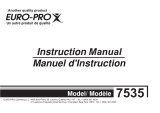 Euro-Pro 7535 User manual
Euro-Pro 7535 User manual
-
Brother Innov-is 4750D User manual
-
Emerio SEW-121820.1 Sewing Machine User manual
-
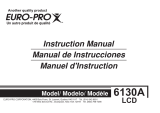 Euro-Pro 6130A2 User manual
Euro-Pro 6130A2 User manual
-
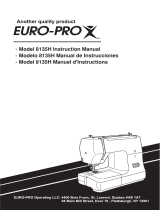 Euro-Pro 8135H Owner's manual
Euro-Pro 8135H Owner's manual
-
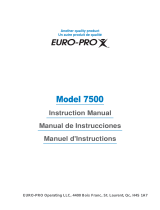 Euro-Pro 7500 User manual
Euro-Pro 7500 User manual
-
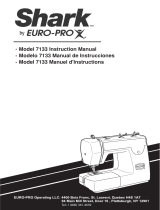 Euro-Pro 9000 User manual
Euro-Pro 9000 User manual
-
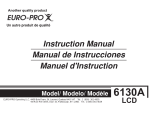 Euro-Pro 6130A User manual
Euro-Pro 6130A User manual



































































































